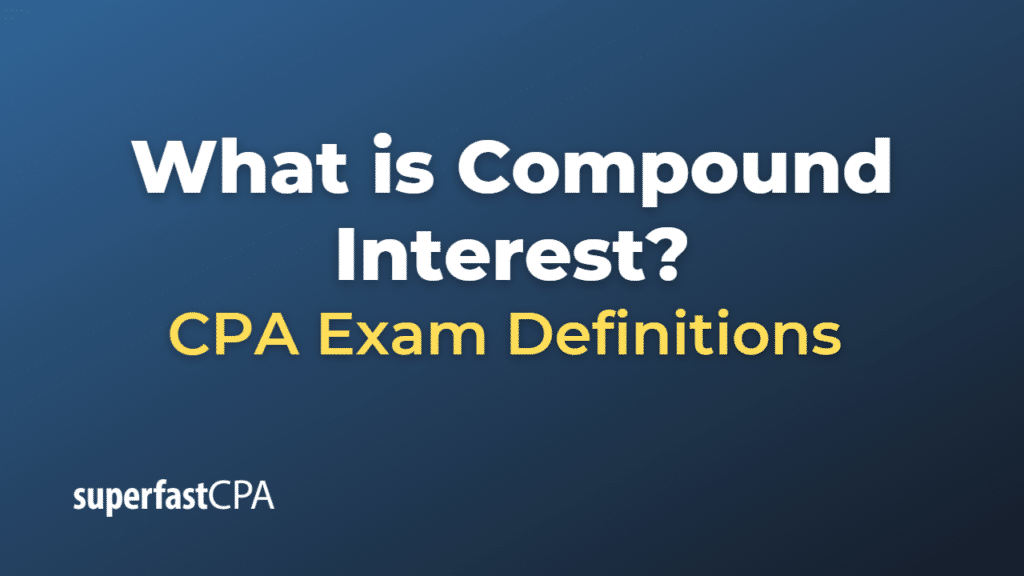Compound Interest
Compound interest is a method of calculating interest on a sum of money, in which the interest earned is periodically added back to the principal amount, so that the interest is effectively earned on both the initial principal and the accumulated interest. This leads to exponential growth of the invested amount over time, as opposed to simple interest, which is calculated only on the initial principal for the entire investment period.
The formula for calculating the future value (A) of an investment with compound interest is:
\(A = P \left(1 + \frac{r}{n}\right)^{nt} \)
where:
- P is the initial principal (the original amount of money invested or borrowed)
- r is the annual nominal interest rate (expressed as a decimal, e.g., 0.05 for 5%)
- n is the number of times interest is compounded per year
- t is the number of years the money is invested or borrowed for
Compound interest is widely used in various financial instruments, such as savings accounts, investment products, loans, and mortgages. It benefits investors in the long run, as the interest earned can grow significantly over time, but it can also increase the cost of borrowing when interest is compounded on loans or credit card balances.
To fully take advantage of compound interest, it’s important to invest or save for the long term and to make regular contributions to your investments or savings accounts, as this allows the interest to compound over time, leading to exponential growth of your invested amount.
Example of Compound Interest
Let’s consider a hypothetical example to illustrate how compound interest works.
Suppose you invest $5,000 in a savings account that offers an annual interest rate of 4%. The interest is compounded quarterly, which means the interest is calculated and added to the principal four times a year. Let’s calculate the future value of this investment after five years.
Using the compound interest formula:
\(A = P \left(1 + \frac{r}{n}\right)^{nt} \)
where:
- P (initial principal) = $5,000
- r (annual interest rate) = 0.04 (4% as a decimal)
- n (compounding frequency) = 4 (quarterly compounding)
- t (number of years) = 5
\(A = 5,000 \left(1 + \frac{0.04}{4}\right)^{4*5} \)
\(A = 5,000 \left(1 + 0.01 \right)^{20} \)
\(A = 5,000 \left(1.01 \right)^{20} \)
\(A = 5,000 (1.2202) \)
\(A = 6,101 \)
After five years, your investment will have grown to $6,101 due to compound interest. This is higher than the amount you would have earned if the interest were calculated using simple interest ($5,000 * (1 + 0.04 * 5) = $6,000).
In this example, you can see that compound interest leads to a higher return on investment compared to simple interest. The longer the investment period and the more frequent the compounding, the greater the effect of compound interest on the growth of your investment.












